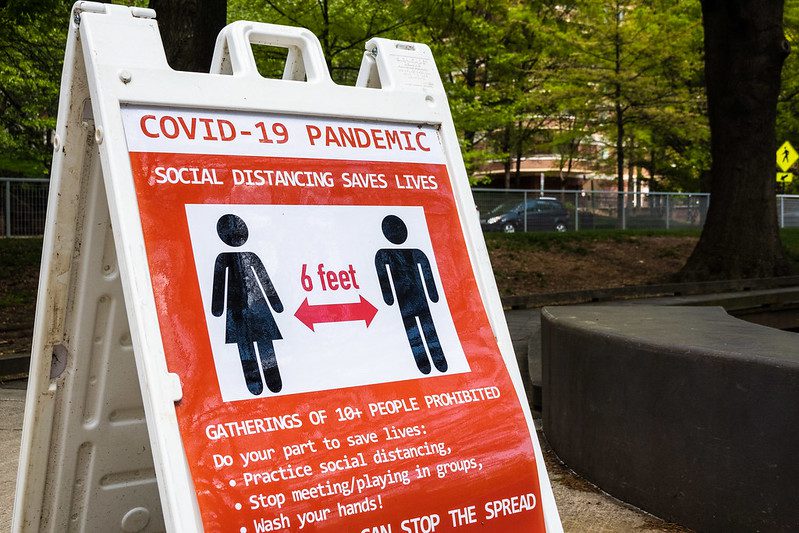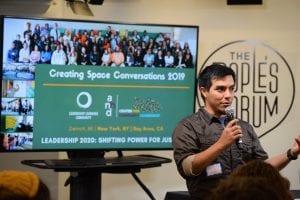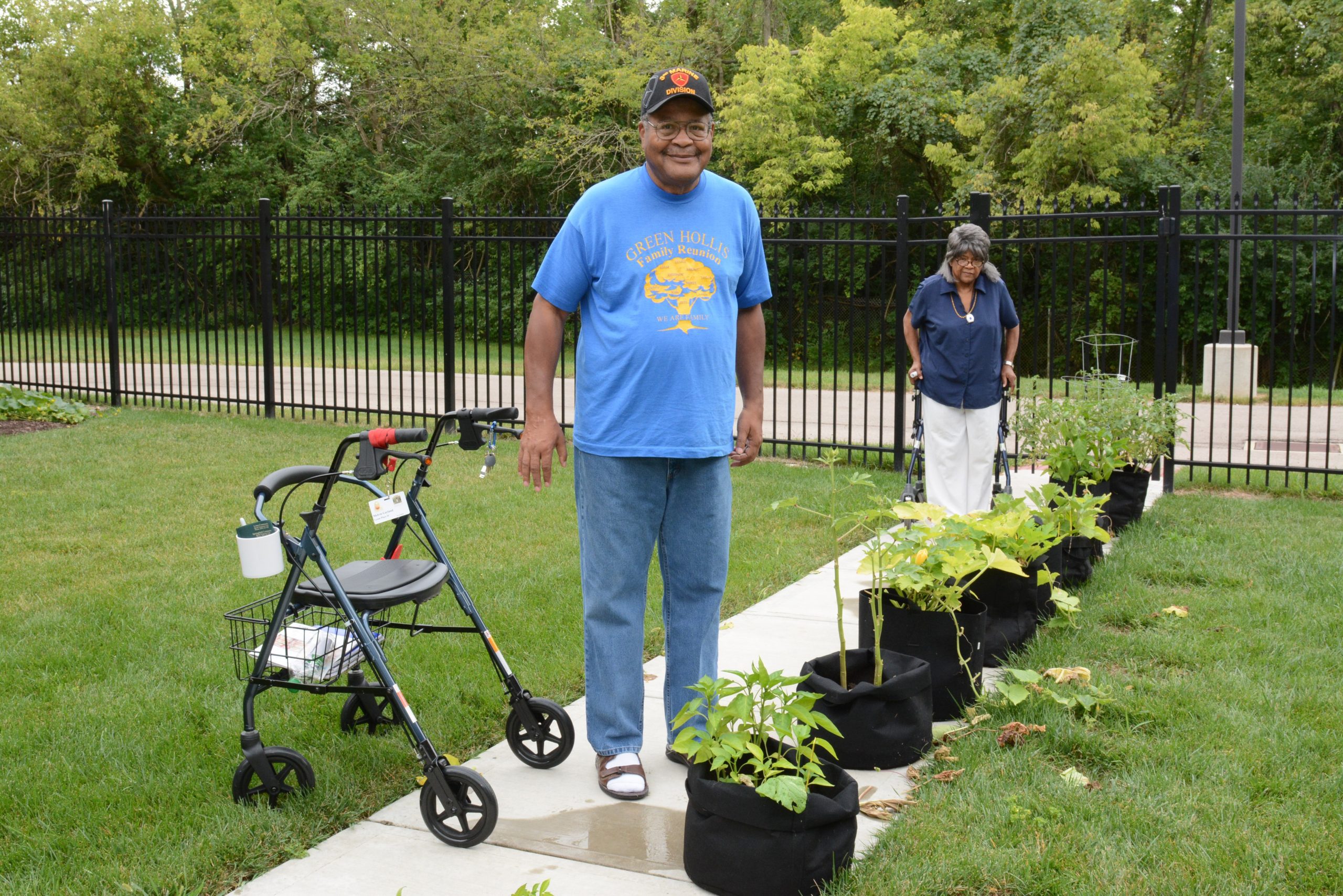
Photo by flickr user dmbosstone, CC BY-NC-ND 2.0

Armando Moritz-Chapelliquen co-facilitates ANHD’s Creating Space Conversations 2019 Leadership 2020: Shifting Power for Justice event co-organized with the Leadership Learning Community and Center for Community Leadership in New York. Photo by Melanie Breault, ANHD
The past few weeks have been incredibly difficult for many of us. Living in the center of the pandemic—or in some cases in the center of a citywide outbreak—has taken and will continue to take an emotional, psychological, political, and economic toll. With that in mind, I have personally found comfort in pouring myself fully into my work as a community organizer and director of capacity building for an affordable housing and equitable economic development nonprofit. While this is not a personal prescription to become a workaholic, doing so has allowed me to learn some vital lessons I wanted to share.
No. 1—“Community” is Rooted in Our Emotions, Not Where we are Located
In this moment of social distancing, we’ve all been impacted by the lack of physical contact with those we care about most. In a neighborhood, that means people don’t stop and catch up with one another. In outreach, it means some of the most basic forms of base-building are impossible. And in shared spaces like campaign offices or a classroom, it means the moments from which you collectively develop—whether it is the wrangling of a political question or the overcoming of a tense interpersonal exchange—need to happen in new ways in order to allow for the sense of community to take hold.
In reflecting on campaign and classroom spaces, what I recall most strongly isn’t the physical proximity to other people, it’s the joy of being in struggle with like-minded individuals; it’s the warmth of seeing faces light up at the recognition of their own political power. These emotions are often strengthened by sitting together in the same room, but one does not require the other. We can’t meet like that right now, but that doesn’t mean we can’t feel that way anymore. While acknowledging the limitations of the various services and platforms now being commonly used, there is an inherent value in seeing the face of your fellow staffers, members, and allies. We may be physically divided by our distance, but we can be emotionally bound through our common purpose, whether it is the pursuit of political goals or the desire to professionally develop as organizers.
No. 2—Visionary and Transformative Politics Were Built for this Moment
We began this year hearing that tough decisions would need to be made. Elected officials signaled that budget deficits would limit possibilities, public attention was consumed by primary politics, and many of us continued to locally triage the policy impacts of the Trump administration. Since the pandemic effectively shut down my city weeks ago, the federal government created $2 trillion to help keep the economy afloat and the state enacted an eviction moratorium. And debates in cities across the country about the need for more affordable housing have shifted to nationwide calls for rent freezes or rent strikes.
Movement work can feel like a perpetual struggle to stay afloat, but the value of having a transformative vision for the world has never been clearer. Many of the coalitions leading campaigns at the state and local levels today were able to do so because they have always emphasized the need for a transformative vision to guide their transactional demands. In addition to the impact this has on how we understand politics in this moment, it also has a profound impact on the organizers engaged in these campaigns. They are fired up by this moment, eager to see just how much we can accomplish at a moment when nothing seems impossible.
No. 3—We Are All More Powerful Than we Ever Believed
The longer this crisis goes on, the more likely it is that we will be personally affected by the virus. Many of us are already carrying the burdens of this pandemic, and these burdens are added to those we carried before this moment began, like racial and economic inequality. None of these burdens, either those directly related to the virus or those from before, have ever been equally distributed in our society. But in acknowledging this reality, I find a reason to be reassured.
Over the scope of a single Zoom call, I spoke with individuals who are experiencing anxiety, who are frustrated at family or friends who haven’t taken the pandemic seriously, who have lost jobs, who are struggling to find a place to sleep, and who have lost loved ones. In spite of the inequitable distribution of burdens, they demonstrated remarkable resilience and even joy as our time together wore on. What surprised me most was not that individuals were bearing these challenges, but that they felt that being together—even over a video call for work—was an important respite for them in these most difficult times. I’m inspired by their passion and cognizant of my organization’s power in creating these spaces for them, to be a safe harbor in the middle of a storm. We all have individuals like these in our work, and we similarly have that power to create safe harbor, whether through a workshop, a meeting, or a check-in.




Thanks Armando. Nicely said.
thank so much Armando